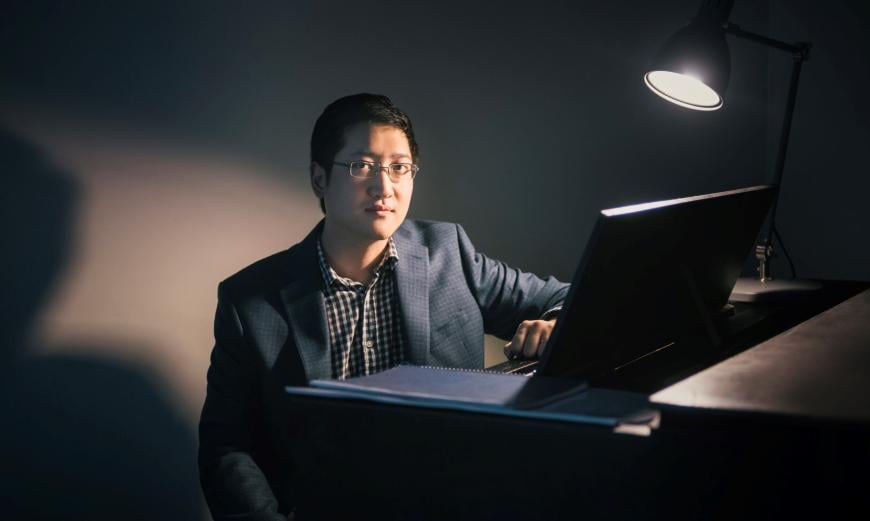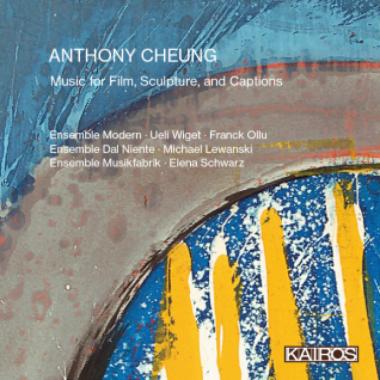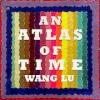
San Francisco-born Anthony Cheung is one of America’s most imaginative young composers. Yet his work has been better appreciated across the Atlantic. This fifth portrait album, Music for Film, Sculpture, and Captions, was released by Austrian powerhouse label KAIROS and features two of Germany’s leading new-music ensembles.
Granted, Cheung’s eccentric sensibilities lean toward the European avant-garde — he studied at Columbia with French spectralist Tristan Murail and wrote his doctoral dissertation on György Ligeti’s Hamburg Concerto. But while his music is challenging, it’s by no means impenetrable. From his idol Beethoven, Cheung inherited a sense of motivic coherence that helps to organize his kaleidoscopic sonorities.
Take, for instance, the opening “Wound Wire” movement from his 2019 piano concerto A line can go anywhere, which launches this disc. Soloist Ueli Wiget (shadowed by a second, microtonally tuned keyboard) cycles through repetitions of a kinetic motto: a held low note followed by a rapid upward flourish. It’s as if energy were being stored and then released, like the tightly wrapped piano wire of the movement’s title had suddenly unraveled.

Meanwhile, members of Ensemble Modern, deftly led by Franck Ollu, are suspended in a maximally complex counterpoint — any additional voices would reduce it to pure chaos. This isn’t some learned Bachian exercise. Teetering on the edge of entropy, Cheung’s polyphony calls to mind a whimsical ecosystem of protists in a drop of pond water, zipping around and bumping into one another. Occasionally, the wriggling and zigzagging begins to settle, and guided by the pianist, the players coalesce on three blaring, big-band chords before going their separate ways again. Much of the writing is indebted to jazz, but it never comes off like a forced hybrid. Cheung, a skilled pianist and improviser in his own right, has seamlessly integrated this style into his personal language.
In the exquisite slow movement, “Weightless/Sustained,” Cheung exhibits a knack for synesthetic textures and colors. This is what a quartz might sound like if it could sing — the piano’s prismatic upper register supported by pizzicato strings and mallet percussion. Intricate metric layering and floating woodwind lines help to lend the impression that we’re astral-projecting through some crystal cosmos.
The closing “Woven Wire” movement is an homage to the gyroscopic sculptures of Japanese American artist Ruth Asawa. Cheung captures the moiré patterns of her basket-like creations in a virtuosic perpetuum mobile for Wiget, who executes impossibly difficult cross rhythms with player-piano precision. For the pinwheeling grand finale, jackhammer repeated notes and funnel-shaped two-hand runs seem to suck us down into the accelerating vortex of Asawa’s crisscrossing wires.
Cheung’s proclivity for musical illustration carries over into The Natural Word (2019), a curious sequence of instrumental sound effects inspired by the bracketed descriptions of nonverbal noises you find in television closed captioning, like “[wind whistling]” or “[heavy breathing].” The CD booklet includes a time-stamped “libretto” that lists the subtitles that are projected during a live performance as the sounds change.
This isn’t simply a musique concrète collage — Cheung finds a nice balance of verisimilitude and aesthetic stylization. There are identifiable motives and even a semblance of large-scale form, keeping these Foley-like imitations squarely in the realm of music. While a few passages feel a tad too literal (such as frog guiros and bird whistles for their amphibian and avian counterparts), Michael Lewanski and the 12 members of Chicago-based Ensemble Dal Niente summon some miraculously vivid sonic images.
The evocations of “[rain pattering]” and “[electronic humming]” are particularly satisfying, inducing ASMR-like tingles. Most impressive is the final “[recording: orchestra, faint],” in which the ensemble recreates the tinny, muffled sound of a gramophone. Brushed snare drum simulates static while the slow descent of pebbles in a rainstick mimics a scratchy needle riding a record’s inner groove.
This release closes with Cheung’s null and void (2021), a soundtrack to the film Stump the Guesser by Guy Maddin, Evan Johnson, and Galen Johnson. The 20-minute short is a tribute to Soviet silent cinema, offering a surrealist vision of a fairground showman attempting to wed his own sister. But the onscreen action isn’t essential to appreciating Cheung’s score, which stands sufficiently on its own.
Ensemble Musikfabrik, led by Elena Schwarz, conjures a fantastically grotesque atmosphere reminiscent of painter James Ensor’s carnivalesque canvases. Savage piano-and-percussion ostinatos accompany slinking wind melodies, rendered dirty and degraded by quarter-tone deviations. One bizarre passage incorporates Harry Partch’s Chromelodeon I, a reed organ tuned to the composer’s 43-tone scale. Its queasy harmonies introduce a drunken piano waltz that staggers toward a frenzied climax of group improvisation. Like much of Cheung’s music, it threatens to burst at the seams with activity but is reined in by another Beethovenian touch — an unexpected recapitulation of the piece’s opening material.
Admirers of these ensemble works will also enjoy Cheung’s chamber album All Roads, issued just a few months before this disc. The title piece for piano quintet is a fascinating reimagining of Billy Strayhorn’s jazz standard “Lotus Blossom.” And in March, Southern California readers will have a chance to hear Cheung’s latest work premiered by John Adams and the LA Phil New Music Group.


